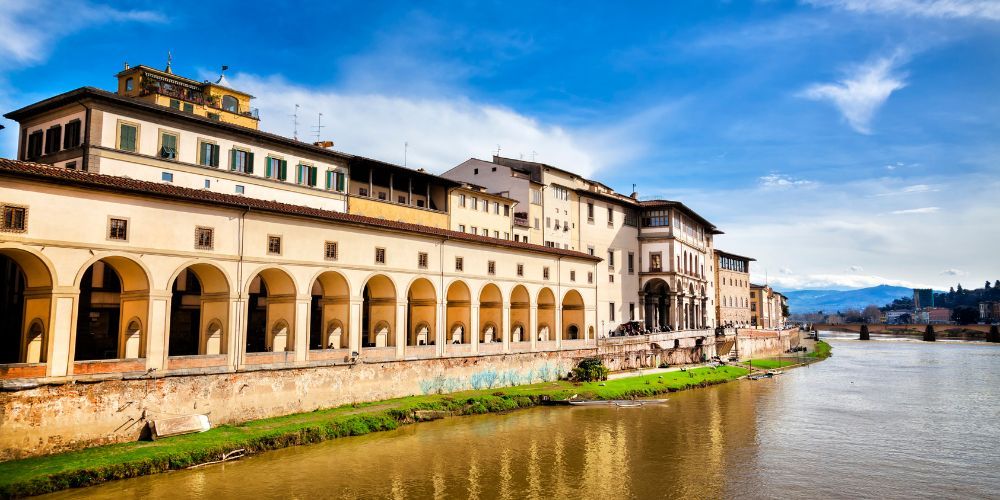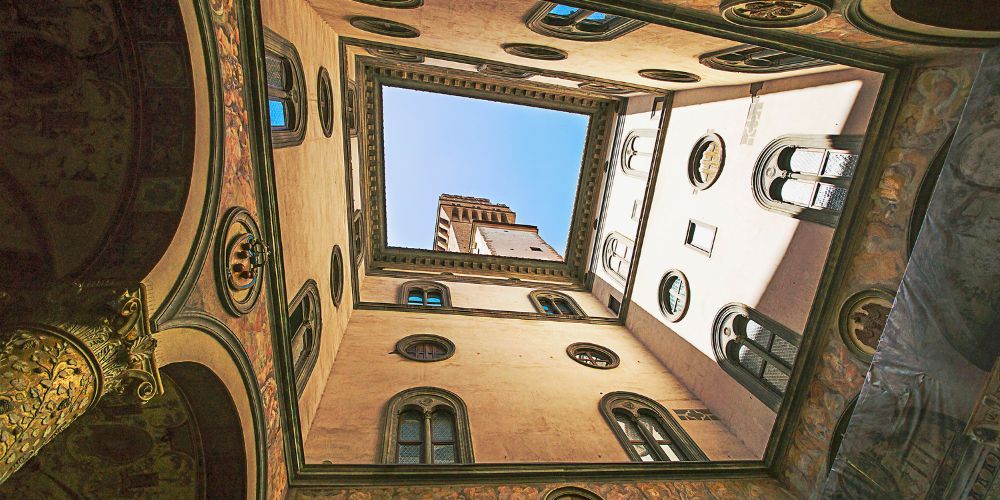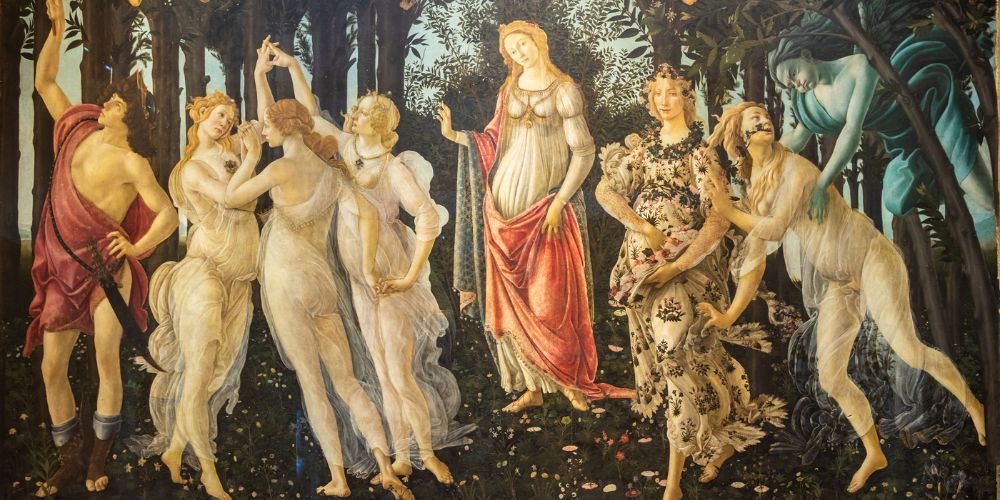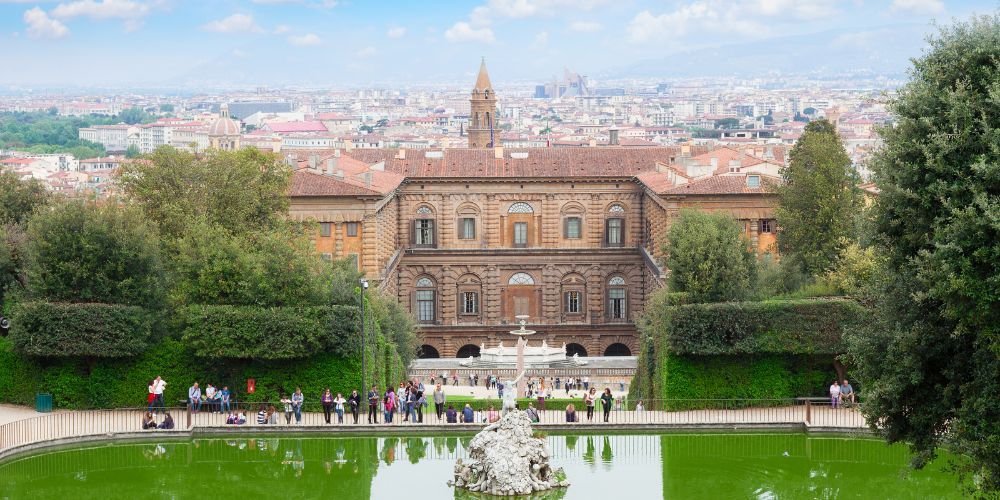The Uffizi Gallery is one of the most important museums in the world, and for its fame does not need any introduction: in this treasure chest of art, history and culture is housed the richest collection of Italian art of the Renaissance, with works by masters such as Botticelli, Tiziano, Michelangelo and Leonardo.
The Gallery is located in the large building designed by Giorgio Vasari between 1560 and 1580 to house the administrative and judicial offices of the Medici family, who also kept his precious works of art here. In addition to painting, the Gallery offers an extraordinary collection of ancient sculptures and an important collection of Drawings and Prints, which includes works and sketches of the great masters of art.
Read this article to know all the essential info for the visit and find the "skip the line" tickets: you can easily organize your visit to the Uffizi Gallery without wasting your precious time.
Discover the Uffizi Gallery with priority access
Uffizi Gallery: info, skip the line tickets and guided tours

Ph Canva by Soner Tuncer
The Uffizi Gallery is one of the most visited museums by tourists from all over the world, for this reason the entrance may require long waiting times.
The opening hours are from 8.15 to 18.30, from Tuesday to Sunday. The last entrance is at 17.30 and at 18.30 visitors must go to the exit. The Gallery is closed every Monday (excluding some public holidays) and December 25. To see the most significant artworks in Uffizi Gallery, it is advisable to dedicate at least three hours of visit.
The Uffizi Gallery is located in Piazzale degli Uffizi 6, next to Palazzo Vecchio and the Arno River. The entrances are on the left, the ticket office on the right.
There are several ways to reach the Uffizi Gallery by public transport: by train, the nearest station is Santa Maria Novella. From there you can reach the Gallery on foot in about 10 minutes, following Via Cerretani, Piazza del Duomo and Via Calzaiuoli to Piazza della Signoria. By bus, the nearest stop is Uffizi Gallery, which is on line C1. The Gallery is about 210 meters from the bus stop.
To avoid endless queues at the entrance is always recommended booking, although it is necessary to specify that this is mandatory only on weekends. Even on weekdays, however, waiting times could be quite long.
How to do then? We suggest a few options tailored to you: from priority "skip the line" ticket entrances, to audio-guided entrances or guided tours and combined tickets to access multiple attractions. Keep reading this article to find out all the options.
Discover the Uffizi with a guided skip the line tourUffizi Gallery: the history of one of the most famous museums in the world

Pk Canva by Roman Babakin
The Uffizi Gallery was originally conceived as a building to house the administrative and judicial offices of Florence, a theater and some private spaces reserved for the Medici family and their guests. It was commissioned to Giorgio Vasari in 1560 by Cosimo I de' Medici, first Grand Duke of Tuscany: the plan of the building was designed in a U shape along the river Arno, connected to Palazzo Vecchio and Palazzo Pitti through the Vasari Corridor, built in 1565 and currently closed to the public for works.
After the death of Vasari and Cosimo I in 1574, the works were completed by Bernardo Buontalenti at the behest of Francesco I de' Medici, who created the Gallery on the second floor in 1581. The heart of the Gallery was the Tribuna, an octagonal room completed in 1584 that housed the most precious works of the Medici collections.
The Uffizi continued to be enriched with works of art in the following centuries, thanks to the donations and purchases of the Medici and Lorena, who succeeded the first in the government of Tuscany. In 1737 Anna Maria Luisa de' Medici bequeathed the artistic collections to the city of Florence, provided that they never left the Grand Duchy. It was Grand Duke Peter Leopold who opened the Gallery to the public in 1769, effectively inaugurating one of the first modern museums.
In 1919, the patrimony of the Uffizi was ceded to the Italian State. Unfortunately, in the night between 26 and 27 May 1993, a Mafia attack severely damaged the Gallery: a car bomb caused the death of 5 people living in Via dei Georgofili, destroying some works and irreparably damaging others. After long restoration works the Gallery was reopened in 1996.
Discover the Uffizi Gallery with guided tour and audio guideWhat to see at the Uffizi Gallery: the most important works of art

Ph Canva by Paologallophoto
Among the most famous artworks of the Uffizi Gallery we certainly have Botticelli’s paintings: the Spring is a tempera painting on panel, representing nine figures of classical mythology, including Venus, the three Graces and Mercury. The meaning of the work is still the subject of debate among scholars, but it is believed to be linked to the theme of love and fertility.
The Birth of Venus is another famous masterpiece of the Florentine painter: it portrays the goddess of love emerging from the water on a shell, driven by the wind of Zephyr and welcomed by a nymph. The work is considered a symbol of the Renaissance and humanistic culture.
The Madonna del Cardellino by Raffaello Sanzio is an oil painting on panel depicting the Virgin Mary with the Child Jesus and Saint John, holding a goldfinch. The goldfinch is a symbol of the Passion of Christ, as according to legend he tried to remove the thorns from his crown.
The Venus of Urbino by Tiziano Vecellio is an oil painting on canvas depicting a young naked woman, lying on a bed, with a sensual look at the viewer. The work was commissioned by the Duke of Urbino Guidobaldo II Della Rovere as a gift for his wife Giulia Varano. It is one of the first examples of erotic female nude in the history of art.
The Tondo Doni by Michelangelo Buonarroti, a tempera painting on a circular panel represents the Holy Family together with Saint John and five naked men. The work was created for Agnolo Doni on the occasion of his marriage to Maddalena Strozzi, and it is considered a masterpiece that anticipates the stylistic and chromatic Sistine Chapel.
Discover the Uffizi with a reserved last minute entranceWhat to see with the Uffizi Gallery: Palazzo Pitti and Boboli Gardens

Ph Canva by Anastasia Collection
One of our proposals is a combined ticket between three important attractions of Florence: after visiting the Uffizi Gallery with an expert guide, You can continue the tour at Palazzo Pitti and relax walking in the enchanting Boboli Garden that offers a beautiful view of Florence from the Belvedere Fortification.
This beautiful Renaissance palace was built in 1458 by the banker Luca Pitti and purchased in 1549 by the Medici, becoming the home of the family. Today it houses several museums that contain valuable works of Raffaello and Tiziano, the Royal Apartments, the Gallery of Modern Art with the works of the Macchiaioli and the Treasury of the Grand Dukes that preserves a large amount of precious objects.
Discover the Uffizi, Palazzo Pitti and Boboli Gardens with just one passAbout the author
Written on 07/05/2023



Sara Milanolo
Organize with us your visit to the Uffizi Gallery in Florence: here you can find all the info and tickets skip the line.